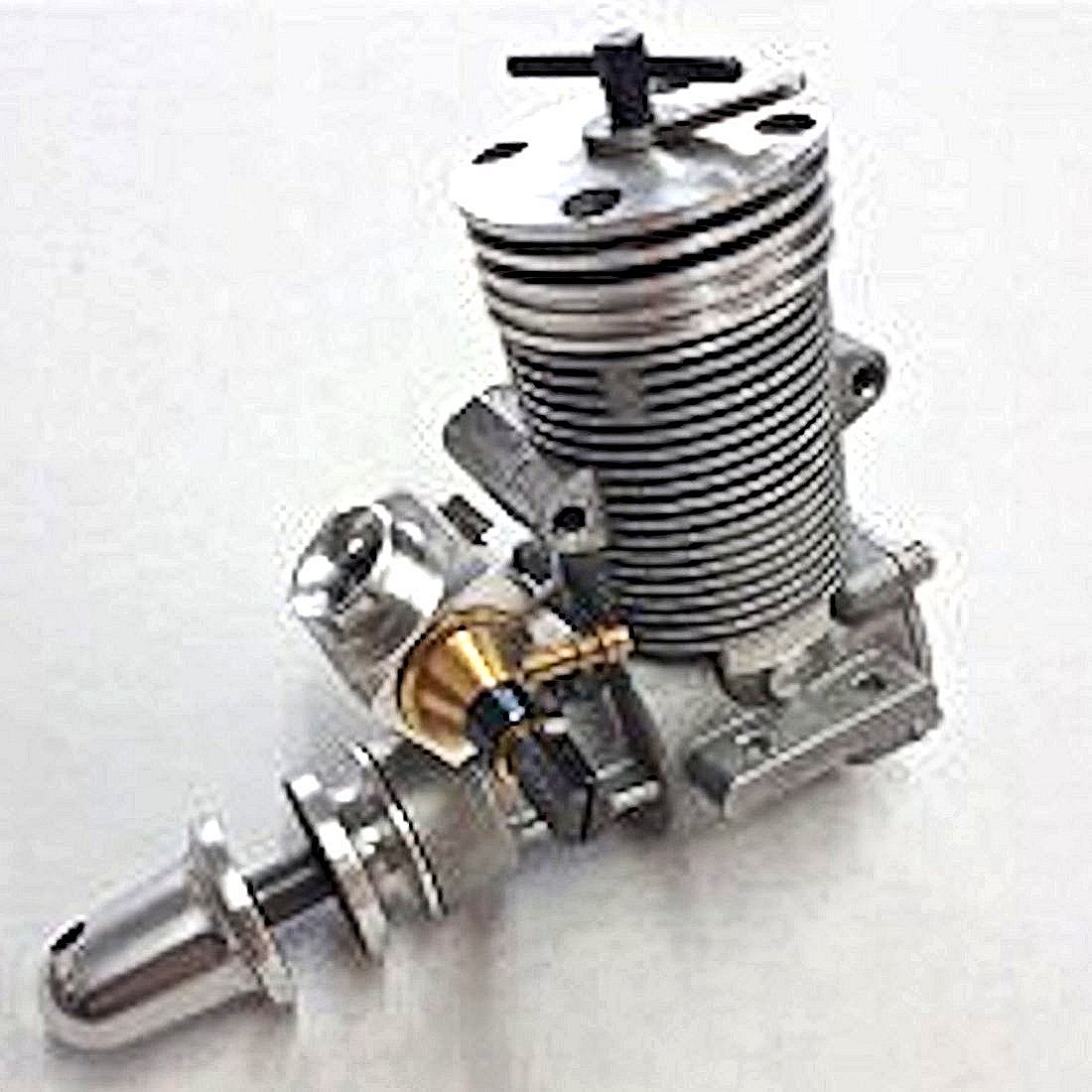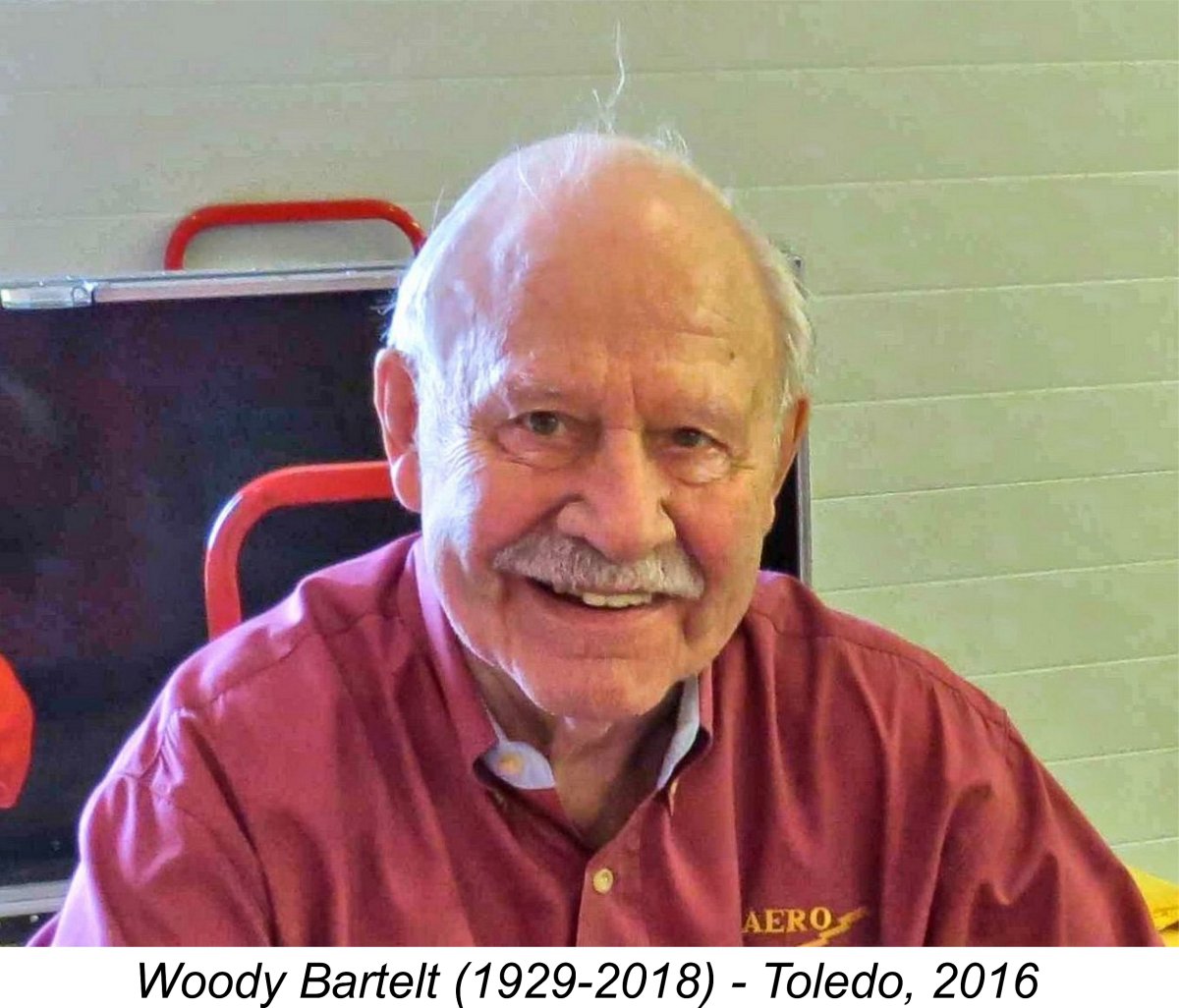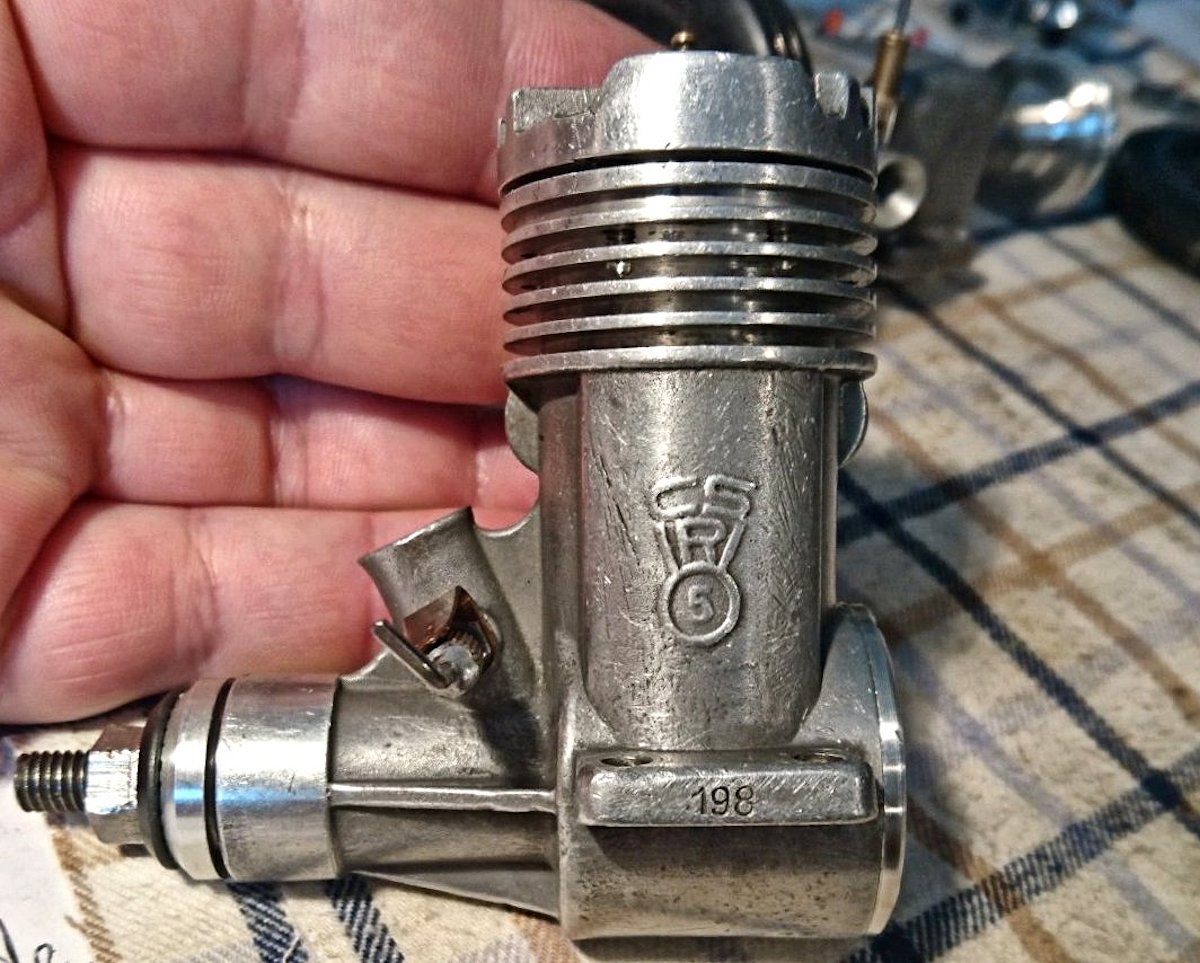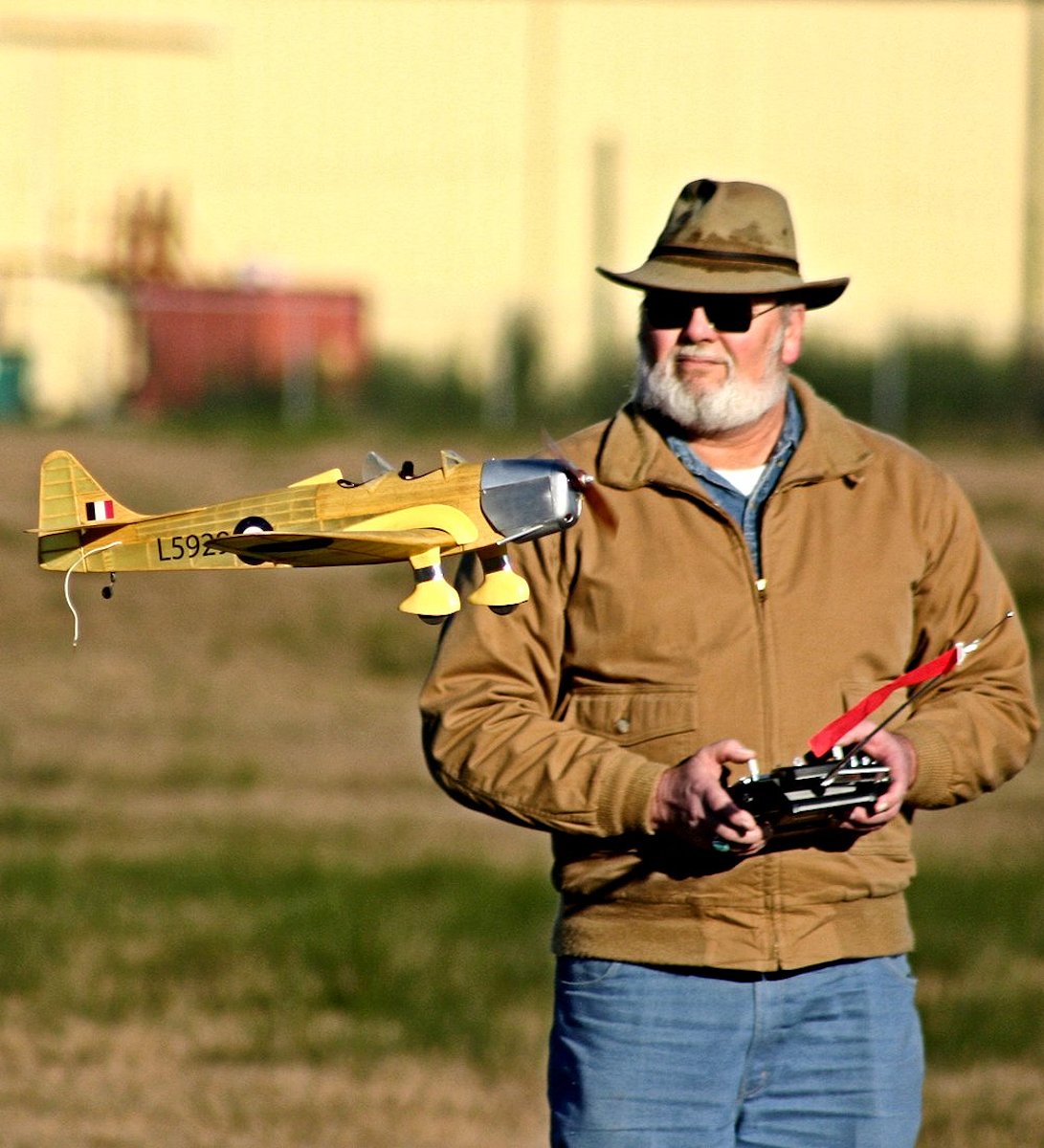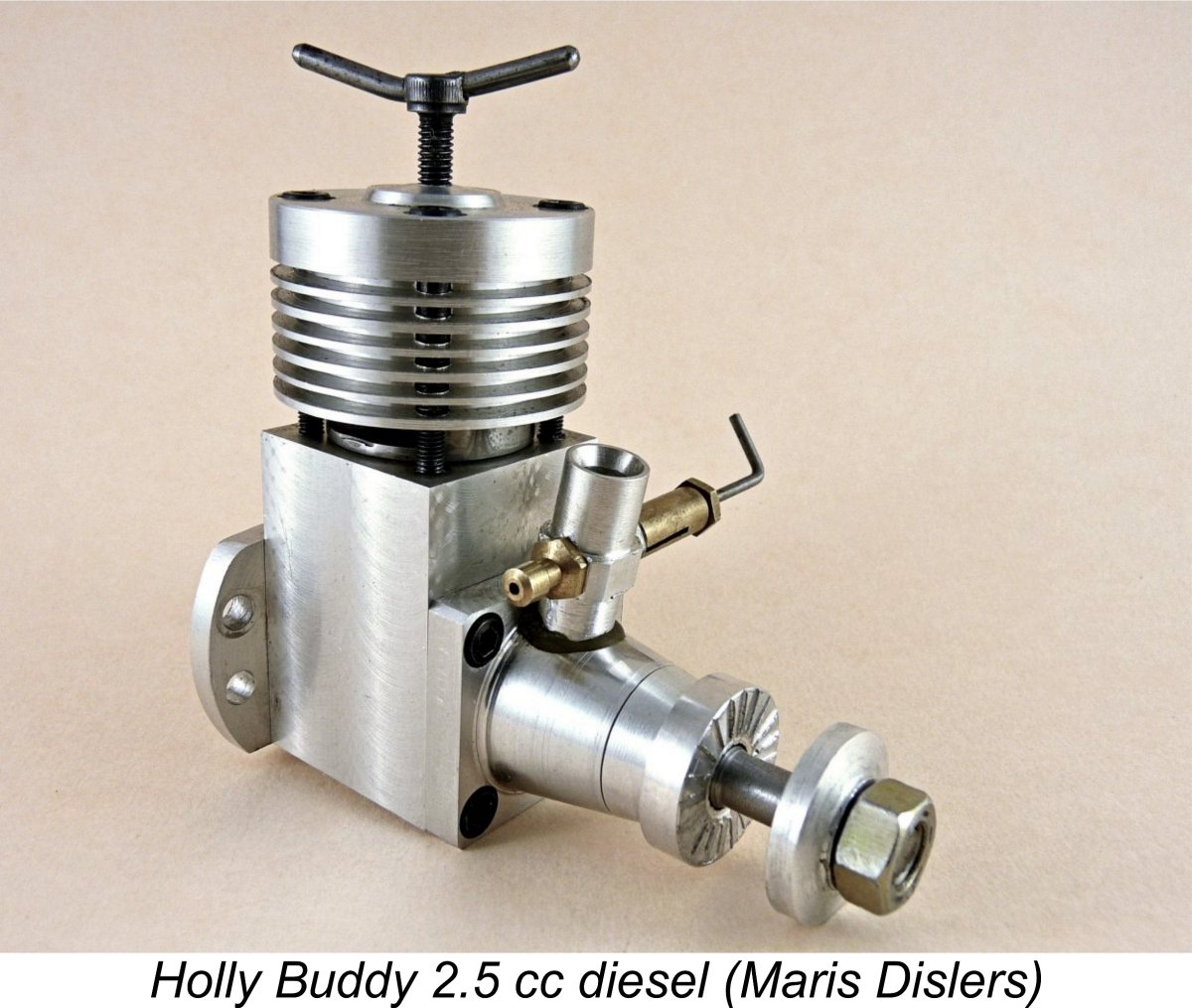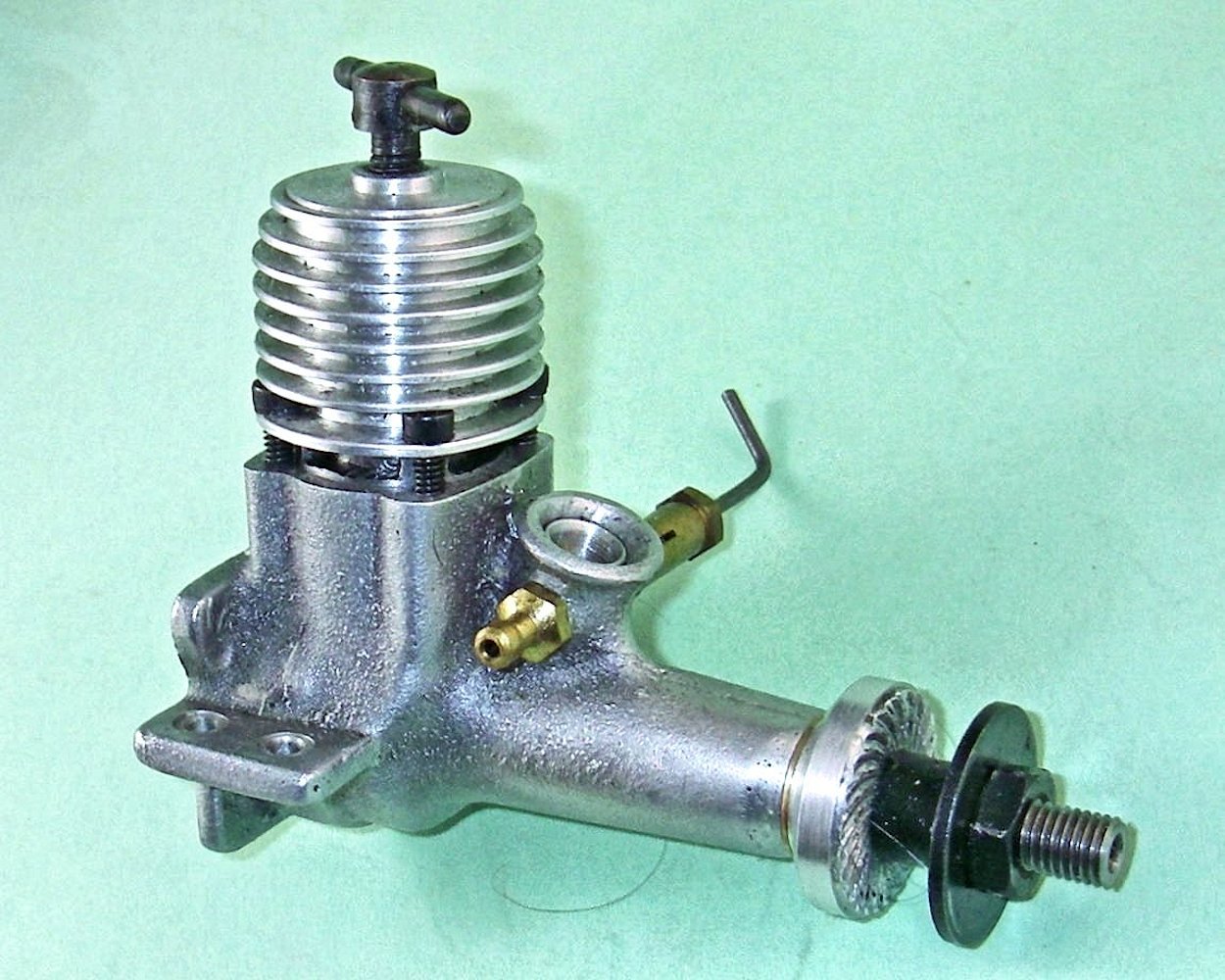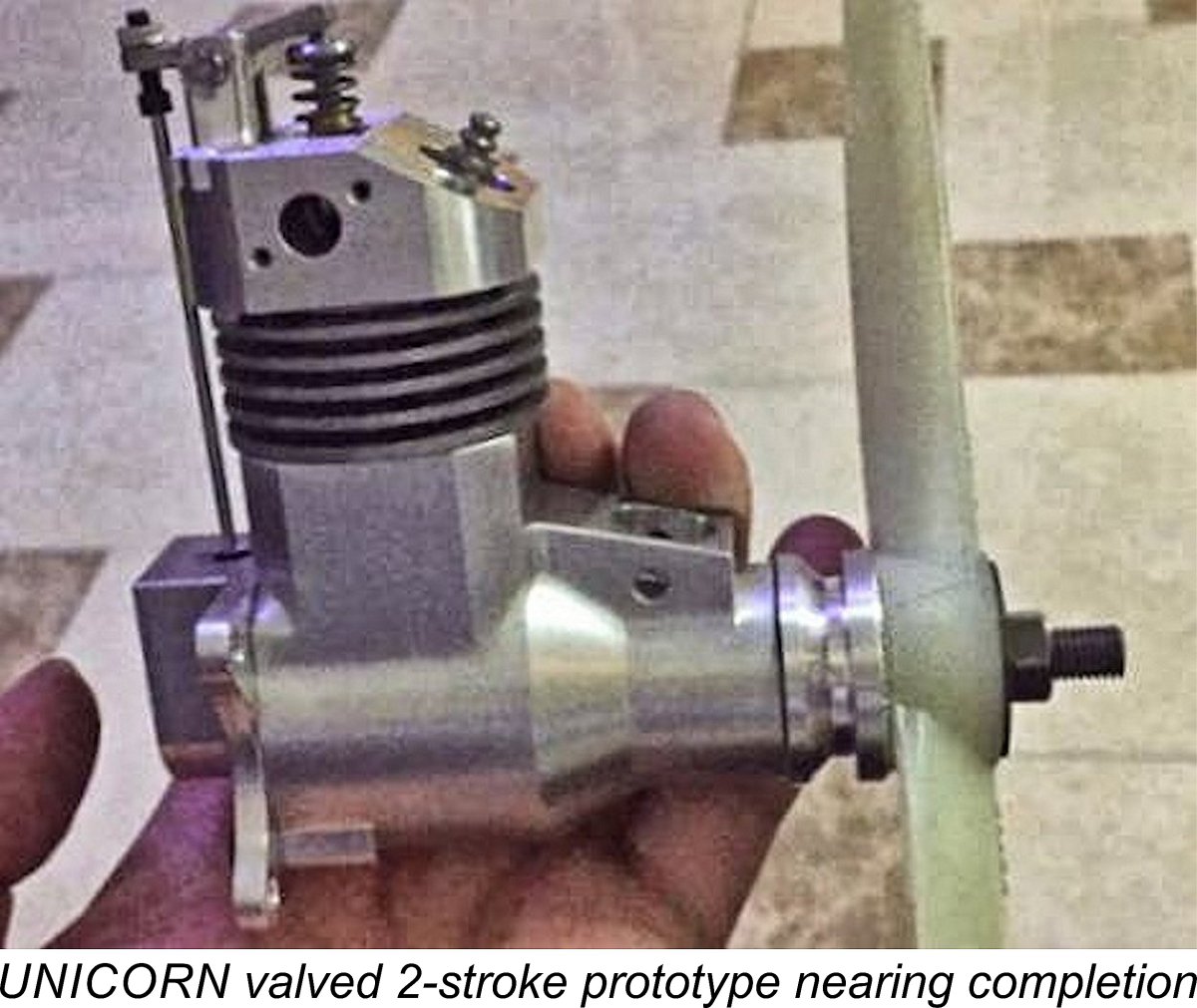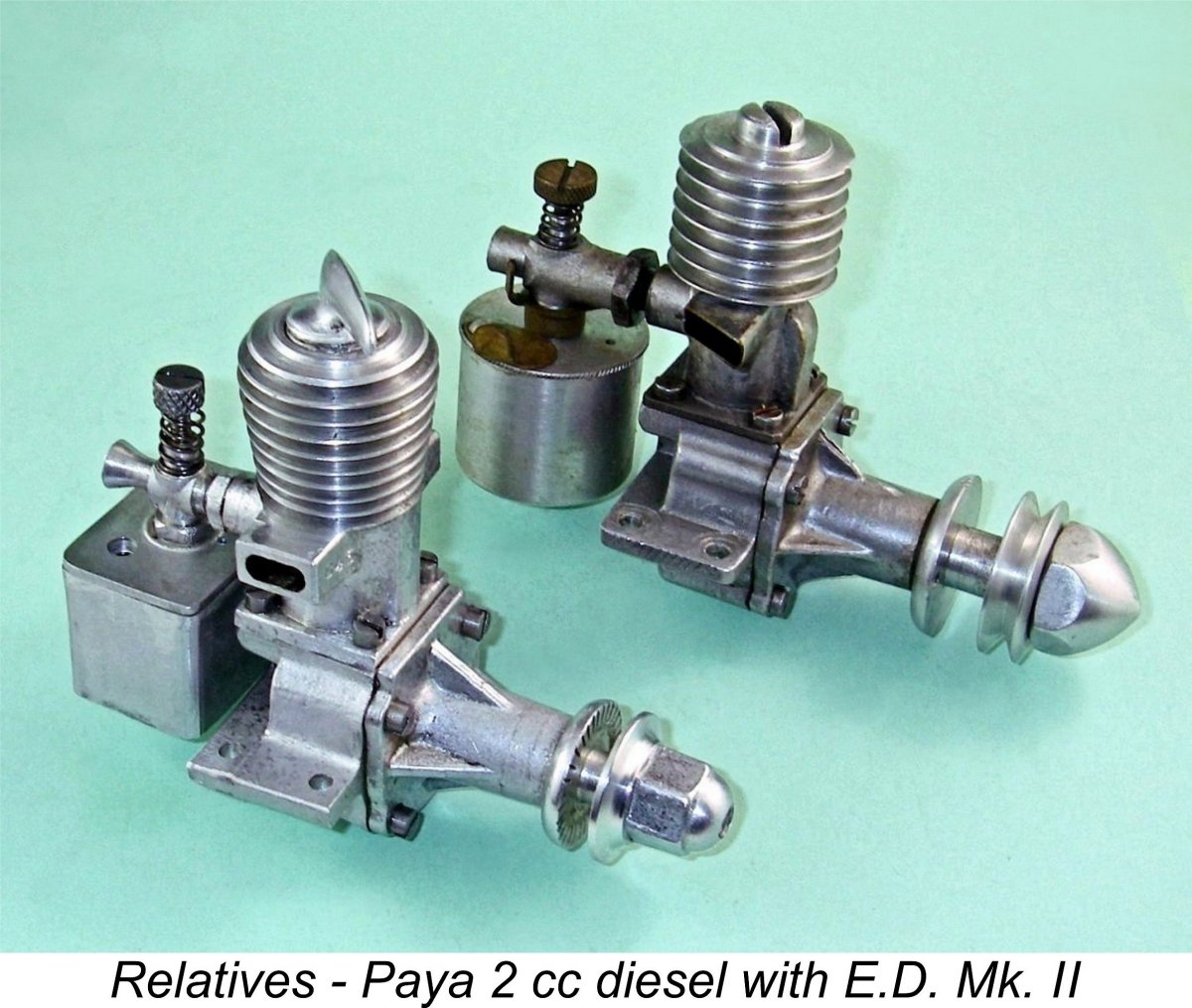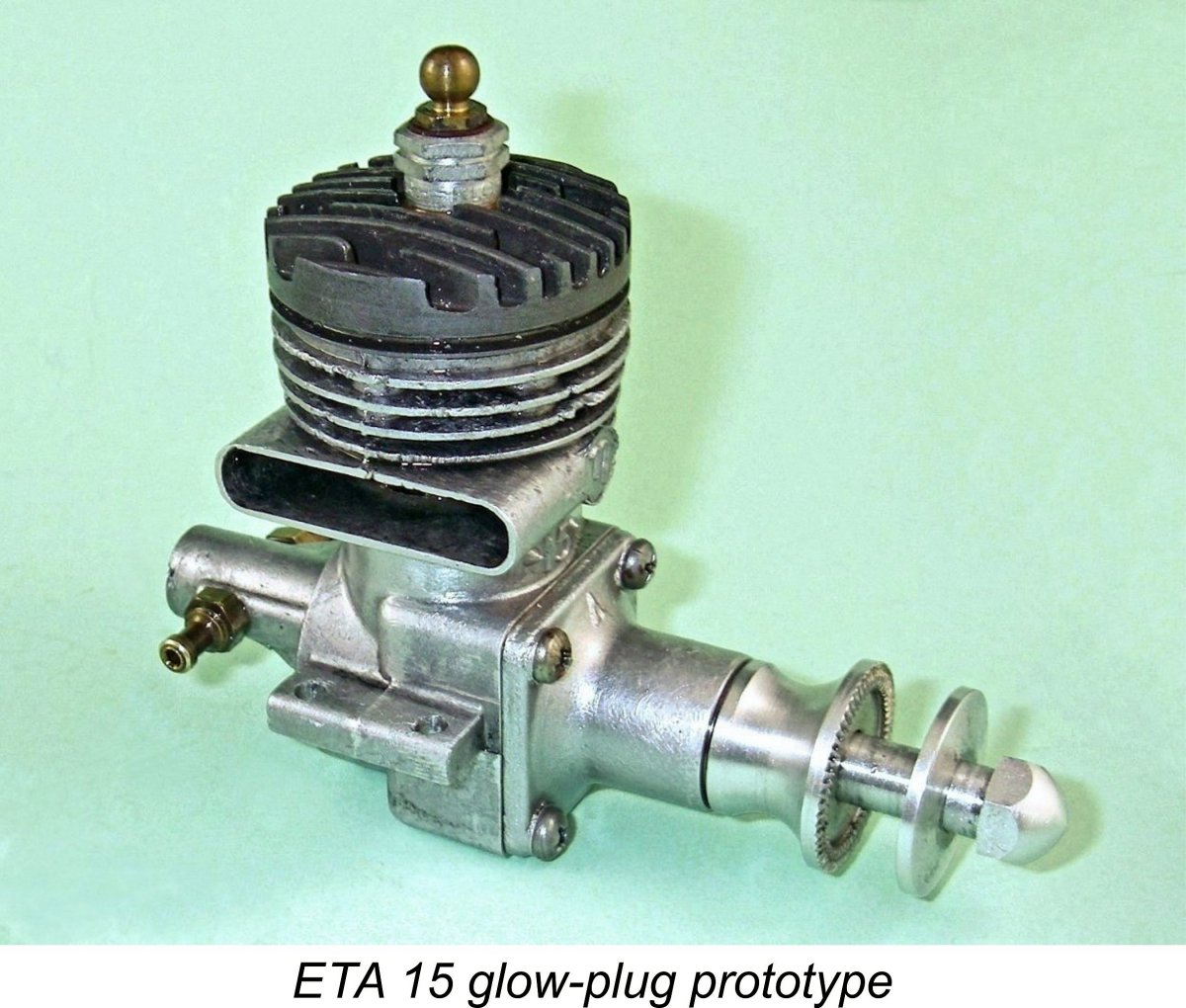
|
|
From the Editor - January 1st , 2019
Anyway, here we go into yet another 12 month period, this time labelled 2019 (or the Year of the Pig if you're Chinese!), during which life will doubtless throw a wide range of challenges, experiences and opportunities at us. What with the various political, economic, educational, ecological and sociological pressures currently facing the world, it promises to be (as the old Chinese salutation says) a case of "living in interesting times!". However, hopefully at least some of that interest will continue to be derived from our ongoing fascination with model aero engines in all their wonderful variety! This month sees us reach a significant milestone which in my opinion bears marking as we pass it. January 2014 (exactly five years ago) was the first month in which no new edition of Ron Chernich's wonderful "Model Engine News" (MEN) newsletter appeared - seemingly the beginning of a "dark age" in terms of the on-line sharing of information between model engine enthusiasts worldwide.This was of course due to the tragic loss of my dear friend and valued colleague Ron Chernich of Brisbane, Australia, the instigator and Editor of MEN. Ron passed away on March 16th, 2014 after a long and courageous fight against the cancer which had bedevilled him for It was this tragedy alone which created what I came to see as the necessity of establishing my own site, which I initiated in April 2014 following Ron's demise. How I wish that this necessity had not arisen ……….. Prior to that unhappy situation arising, Ron and I had enjoyed a warm friendship coupled with a highly productive collegial relationship. From its inception in 2002, Ron’s wonderful web-site had steadily developed into perhaps the single most important on-line resource for model engine builders and collectors worldwide. Big shoes to fill ........... From October 2007 onwards, I was privileged to be the primary author of the regular “Engine of the Month” (EOM) series of articles on Ron's web-site. This series focused on the in-depth histories of a wide variety of model engines and their manufacturers. The articles which may be found here on my own site represent a continuation of that series. Prior to his departure from our midst, Ron and I discussed my plans to establish my own site, of which he was extremely supportive. For me, it's a matter of keeping Ron's legacy alive as best I can. Your support in enabling me to do this has been greatly appreciated. Now back to the present! I suppose that this site's record-setting performance statistics for October 2018 were too good to last. In November 2018, the last month for which complete data are available at the time of writing, the number of hits fell off considerably from the record October figure of 673,468 to a somewhat more modest 542,485. Mind you, prior to that remarkable performance in October this would have appeared as a pretty strong showing. It's clear that site visibility is being maintained at a fairly high level. However, hits are one thing - actual visits are quite another, since they reflect the level of interest aroused among those who happen to hit upon the site. As one would expect, the reduced number of hits in November translated into a commensurate reduction in visits, down from the record October total of 19,372 to a somewhat less stellar figure of 17,810 in November. OK, it's down a bit, but the visit/hit ratio for November (the proportion of hits which translated into visits) was actually up a little at 3.3%. Put another way, one hit in 30 actually resulted in a visit. Moreover, the November visitation figure would have been a new record but for the intervention of that remarkable (and possibly anomalous) number for October. Clearly the site continues to attract its share of direct interest from among those who stumble across it!
I've speculated previously that a reduction in the average number of pages accessed per visit may reasonably be anticipated as time goes by. Perhaps most of those who are still interested in model engines have already read the entire contents of the site, meaning that there are fewer new readers each month for whom the overall site and the articles which it includes are all new. It's probable that the long-term readers are now primarily interested in looking at new material, of which there are typically only two or three items added each month. It's also possible that people using the site are becoming more focused on specific topics than on merely browsing for their own enjoyment. Perhaps the site is being increasingly used as a reference rather than as a browsing site for readers' entertainment. Hopefully this isn't the start of a trend. I've said all along that I'll keep doing this only as long as there's evidence of ongoing interest. It's for this reason that I pay such close attention to the monthly statistics. We'll see how the next few months unfold................
So why is it still there?!? Well, before anyone else asks (and quite a few well-meaning souls already have!), I've thoroughly explored the possibility of removing or at least blocking this feature, but it can't be done without extensive (and very expensive) custom modification to the otherwise very useable generic platform which came as a ready-to-use over-the-counter package, thus keeping the costs and complexities manageable. So we're stuck with this feature. The bottom line therefore remains - please don't bother registering! Doing so accomplishes nothing apart from creating unnecessary cyber-clutter, which I definitely don't need! This message clearly needs to remain a regular feature of these Editorials...........Along with the continued use of this website, the correspondence from my valued contacts around the world has continued to pour in unabated. During the past month I've heard (in no particular order) from Maris Dislers, Ken Croft, Bill Wells, Miles Patience, Andrew Coholic, Bob Benjamin, Rhodri Dafis, Peter Matthews, Sandy Campbell, Lee Hamilton, Ingemar Larsson, Ian Thompson, Peter Rathke, Jon Fletcher, Jesus Ortega Delgado, Fernando Pazó, Marcin Sadowy, Lars Gustafsson, Steve Webb, Steve Hainsworth, Jim Hassad, Jim Dunkin, Don Sohn, Dave Zwolak, Chris Bayliss, Steve Thomas, Sergio Montes, Peng Han, Luis Petersen, Jens Geschwendtner, Neil McRae, Peter Valicek, Michael Diamond, Bob Christ, Larry Davidson, Bill Schmidt, Geoff Peacock, Chris Cox, Mike Conner and Tim Dannels. Sincere apologies to anyone whom I may have inadvertently missed in the crowd - it can be hard to keep track! The blog site has also continued to justify its existence by generating a fair amount of relevant traffic - thanks for that.
The reason for my particular interest in this event is the fact that it's dedicated to the memory of one of my aeromodelling heroes from my teenage years, Amato Prati. That name featured prominently in the results of the World Control Line Speed Championships of the 1950's and 1960's, which I followed avidly at the time. As a result, Prati's name appeared frequently in the text of my earlier article about the classic Super Tigre engines. I suspect that few people today remember just how great a contribution Amato Prati made to the competition success of those engines. I truly wish that I could attend this event myself to honor this great modeller and engine wizard. My best wishes for a successful event. I recognize the fact that every month sees a few new readers accessing this website. This being the case, I see it as being worthwhile to remind readers from time to time about some of the features of the site. Old hands will know this stuff already, but new readers may benefit from such guidance. To start this process off, in last month's Editorial I clarified the way in which readers can access the images on this website at higher resolution than they display in the text of my articles simply by right-clicking on the desired image. This month, I'll draw attention to an existing feature which may be of assistance to new readers who are unfamiliar with the contents of the site. This is the "Gallery" page, which contains a sampling of images of just about every engine about which I've ever written or about which I have current plans to write, together with some basic information about each featured model. In a very real sense, this is a pictorial index of every engine and manufacturer which I've covered in any detail (or have present plans to cover) since I got into this game back in 2007. I've also included a few additional models which were the subject of articles written by others which I consider to be authoritative. As a matter of Editorial policy, I make it my practise to add engines to the Gallery pages whenever an article appears about them, or when I've made good progress towards the finalization of an article for future publication. At present, there are 167 separate entries, with more being added each month. Indeed, since the last edition of this website I've added three new entries. This is the page for the browsers among you or for those who just want a little very basic information. Looking through it myself recently, I became conscious of the fact that over time it's morphed into what amounts to an illustrated model engine encyclopedia of sorts. If your interest is aroused in a particular entry, further details regarding all of the illustrated engines may be found either in the "Engine Articles" category on this site or on MEN. The entries are arranged alphabetically to help you to look for a particular engine. Direct links to articles both here and on MEN are provided. Now for some really good news!! It's not often these days that we get to celebrate the introduction of a new line of quality model diesel engines, so let's make the most of such an opportunity which has recently arisen! I'm referring to the "ED by West" range which has just appeared from Alan Greenfield's Weston UK R/C model supply business. For those who may not know, Alan Greenfield was the designer at E.D. in the early 70's, hence being responsible for the E.D. Super Hunter, Super Otter, Viking Mk II and Sea Lion engines as well as the E.D. AMC carb and a range of anti-cavitation marine props.
Recently it was decided to update the E.D. diesel range by using crankcases and other parts from the West high-performance Schnuerle-ported glow-plug motors and converting them to diesel – hence the name "ED by West". The engines are available in four displacements from 0.25 cuin. (4.1 cc) to 0.52 cuin. (8.5 cc). The .25 cuin. model is illustrated at the right. All engines are equipped with R/C throttles and are test run at the factory to assure good performance. Every motor leaves Weston UK with the compression and needle valve settings as test run. Alan Greenfield deserves strong support from our community for this commendable venture. I for one wish it every success and will place my own order as soon as funds permit. My good mate Maris Dislers has recently received an example for test, and his report will appear in due course in the pages of Another piece of positive news concerns the Woody's Model Engines business which was formerly operated by the late Woody Bartelt (1929-2018), who passed away on April 14th, 2018 at the age of 88 years. Over the years Woody had become a highly valued supplier of parts for vintage engines as well as complete high-quality replicas. I have a number of his fine replicas myself, several of which have featured in my articles both here and on MEN. Woody's departure obviously raised concerns regarding the long-term future of his highly valued model engine supply business. Thankfully, in the latest edition of Tim Dannels' indspensable "Engine Collectors' Journal" (ECJ), Rich Kacmarsky has confirmed that Woody's wife Gloria and his son John intend to continue the business for the foreseeable future. However, there are limitations. The only items available will be those that are already in stock - there will be no further production of these items as they run out. So what's available now is all that will ever be available - get your orders in sooner rather than later! The items which remain available are listed on the previously-linked website.
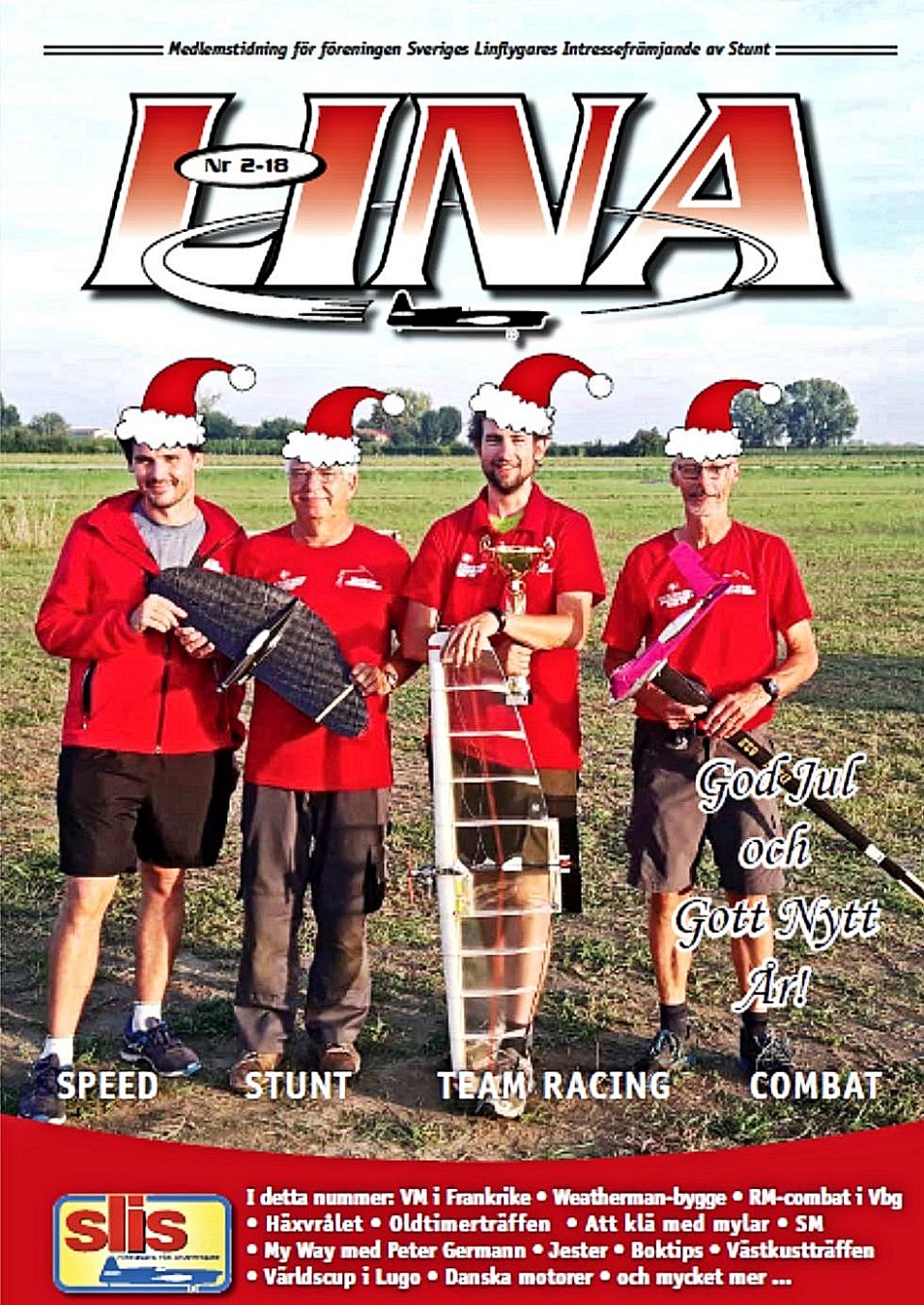 I've added this intriguing motor to the growing roster of unidentified engines pictured on my Wotizit page. The engine is clearly an example of a series production effort - it uses die-castings throughout and bears the serial number 198 on the left-hand mounting lug. We seem to know wotitiz - it's a CSR M-1 5cc glow-plug unit. The questions are - whodunnit, where and when?? Can any reader help?? I've added this intriguing motor to the growing roster of unidentified engines pictured on my Wotizit page. The engine is clearly an example of a series production effort - it uses die-castings throughout and bears the serial number 198 on the left-hand mounting lug. We seem to know wotitiz - it's a CSR M-1 5cc glow-plug unit. The questions are - whodunnit, where and when?? Can any reader help??
Ingemar Larsson of Sweden contacted me once more to let me know that, hot on the heels of the 2018-1 issue of the wonderful control line magazine LINA announced last month, the 2018-2 issue is now also available, complete with a cover depicting a group of happy competitors in festive garb! Ingemar is quick to point out that this level of service to LINA readers is only made possible because he has help in the form of his friend and colleague Niklas Löfroth. Niklas is a Swedish F2B flier who did most of the work on issue no. 2018-1, leaving Ingemar free to focus on issue no. 2018-2. Our thanks to both Niklas and Ingemar for a job well done! As always, the latest issue is chock full of lavishly-illustrated and well-written contest reports, technical information and personal interviews. As usual, about a third of the content is in English, while the balance is easily rendered into any language using readily-accessible on-line translation technology. This superb publication is essential reading for anyone retaining an interest in control line flying. Anyone wishing to gain access to this and future issues is advised to contact Ingemar directly at ingemar.larsson.vis@telia.com
My own website appears to be attracting quite a bit more interest these days from the die-hard model engine home construction crowd. I've had a few construction-related articles in my Technical Topics pages for some time, but lately I've been receiving an increasing number of inquiries from people looking for plans for various engines. Some of these plans are reasonably easy to come by, while others are evidently a little more obscure. Thanks to some sterling cooperation from Ken Croft, I've been able to make both the Motor Boys Plan Book and the Members Only Plan Book available on this website. However, there are others .............. To further help people in this truly admirable category, I've started a new page in my Technical Topics section entitled "Model Engine Plans for Home Construction". That page will provide links to plans and construction data for a variety of model engines Ed was kind enough to send an example of this engine to my good mate Maris Dislers. A detailed review and test of the Buddy appeared in issue no. 980 (January 2019) of "AeroModeller" magazine. If you don't have a subscription to that fine publication, you're missing out!! Next up on the new page is an old favourite - the 2.5 cc Sugden Special diesel. This iconic design dates back to December 1954, when a series of construction articles by designer Dave Sugden was launched in "Aeromodeller" magazine and the relevant plan was published. The engine was later featured in the 1958 "Model Aero Engine Encyclopedia" as well as becoming the subject of a most informative article written much later still by Ron Chernich which remains available on MEN.
I'm not sure where or even if one can presently obtain the required crankcase casting, but there's a possibility (and it is no more than that) that if sufficient interest is evident, my fellow Canadian and former casting supplier Andrew Coholic may be inspired to produce a further batch at some point. I'll keep you posted. The example illustrated at the right is one that Andrew constructed himself from one of his own castings and very kindly presented to me. I hope to publish a test in due course. Meanwhile, Andrew's video of this example running may be viewed here. I'm still awaiting an update from Rhodri Dafis with respect to my article on the Davies-Charlton enterprise. Rhodri has remained in touch to confirm that this is still on his "to do" list, but advises that he is still very busy with a variety of family matters and that it will therefore take him some time to read the existing article and provide any necessary updates and/or edits. However, I think it will be well worth the wait - Rhodri's insights into the Davies family (he's Hefin Davies' nephew) should add a new level of authorityand completeness to the existing text. I'll advise when Rhodri's input has been received and incorporated. I recently noted the very welcome return of the CS company to the model engine manufacturing field with their new UNICORN series which is primarily directed at the collector market. Company owner Han Peng contacted me several months ago to let me know that the first prototype of his fascinating valved 2-stroke glow-plug design was then complete and in the process of being tested. However, I had received no further communications since that report.
Once the revised components are finished, a further round of testing will take place. Given the upcoming intervention of the 2019 Chinese New Year celebration which runs from February 5th - 19th inclusive to usher in the Year of the Pig, Peng cannot guarantee a release date for the engine - all that he can commit to is a sincere intention to get it ready as early as possible in 2019. In the meantime, potential purchasers will just have to be patient. I'm sure that the end result will be worth the wait! I'm very pleased to see that the company is taking the time to get things right. I'm really looking forward to testing my own example! The results of my testing will appear in the pages of "AeroModeller" magazine. Turning now to this month's feature article, we make our first-ever visit to sunny Spain to look at an early product of the rather sparsely documented (in English) Spanish model engine manufacturing industry. I've joined forces with my friends Jesus Ortega Delgado and Peter Valicek to sort out the rather tangled story of the 1947 Payá 2 cc sideport diesel from Galicia in Spain.
It will be immediately apparent to any knowledgeable enthusiast that this engine's design owes a great deal to that of the far better-known E.D. Mk. II of 1947. Several New-In-Box test examples were supplied by Jesus Ortega Delgado, who also put me on the track of some fascinating information regarding the engine's history. Both Jesus and Peter Valicek also contributed to the article by providing their own insights into a number of design shortcomings in the otherwise very well-made engine, along with suggested solutions. It's a complex and instructive tale which I'm sure you'll enjoy. But that's not all! I reported last month that I had been contacted by reader Michael Diamond with a request that I help him to locate a set of the plans for the Weaver 1 cc diesel from England which first appeared in plan In the meantime, I thought that it would be well worthwhile to add an article about the Weaver and its talented designer Arthur F. Weaver to this website, complete with the full set of plans. That has been done, and you can now find both full information and plans for the Weaver 1 cc diesel here on this site. Hopefully this will encourage the construction of more examples of this fine little powerplant. Can't have enough of those! For next month, we visit England once again to have a close look at a little-known "engine that nearly was" - the ETA 15 glow-plug prototype from 1950. The development of this near-mythical engine was begun in 1949 during the period in which ETA designer Ken Bedford was embarking upon a development program for a .19 While engaged upon the ultimately successful ETA 19 design exercise, Ken also developed a preliminary design for an even smaller .15 cuin. (2.47 cc) model arranged along the same lines as the 19. This engine reached the prototype stage, but its performance fell short of meeting Ken Bedford's expectations. As a result, the ETA 15 glow-plug model never saw production. However, thanks to the efforts of Miles Patience and a number of his colleagues, at least five examples of the ETA 15 glow-plug prototype remain in existence today. Next month's feature article will constitute a full review and test of one of these units which has been entrusted to my care. A chance to find out what the British modelling world missed! I think that's it for now. I'll be back to you with another issue on or about February 1st, 2019. Meanwhile, my best wishes for continued enjoyment of our shared addiction! Look after that flicking finger, and may the heady aroma of diesel fumes or burning nitro assault your nostrils frequently! Cheers, Adrian Duncan Coquitlam, British Columbia, Canada ___________________________________ Note regarding material to be found on this site - unless specifically otherwise noted, all images and text which appear on this site are my own work, and I hereby assert my right to be recognized as the originator of this material. For the record, this material is made freely available to all upon two firm conditions:
Adrian C. Duncan Coquitlam, British Columbia, Canada
|
| |
 Happy New Year!! Hopefully you've all survived the annual assault upon your digestive systems, waistlines and social stamina which the holiday season and the onset of New Year jointly represent! I've made it through myself (apart perhaps from the waistline bit) but it seems to get harder with each passing year .........!
Happy New Year!! Hopefully you've all survived the annual assault upon your digestive systems, waistlines and social stamina which the holiday season and the onset of New Year jointly represent! I've made it through myself (apart perhaps from the waistline bit) but it seems to get harder with each passing year .........!
 Of course, the number of visits only tells part of the story - the number of pages accessed is a more representative indicator of the level of interest in the material on this site. In that regard, things weren't so rosy. Despite the still-strong number of visits, the number of pages accessed in November dropped way down from the record October figure of 118,421 to a less-than-stellar 68,232 - a very significant decline, and the lowest number that has been recorded for quite some time. The average number of pages accessed per visit positively plummeted from its record figure of 6.7 in October to only 3.8 in November.
Of course, the number of visits only tells part of the story - the number of pages accessed is a more representative indicator of the level of interest in the material on this site. In that regard, things weren't so rosy. Despite the still-strong number of visits, the number of pages accessed in November dropped way down from the record October figure of 118,421 to a less-than-stellar 68,232 - a very significant decline, and the lowest number that has been recorded for quite some time. The average number of pages accessed per visit positively plummeted from its record figure of 6.7 in October to only 3.8 in November.  Despite my repeated admonitions not to do so, people are continuing to try to register on this website. As I've previously stated time and time again, this has absolutely
Despite my repeated admonitions not to do so, people are continuing to try to register on this website. As I've previously stated time and time again, this has absolutely  Maris Dislers was kind enough to pass on a copy of issue no. 96 (November-December 2018) of "L'Aquilone" (The Kite), which is the Italian-language newsletter of SAM 2001. A most interesting read! Apart from some fascinating details about the design, construction and operation of the amazing little T-Wasp 0.10 cc diesel (and that's not a typo!) made in 1993 by Giovanni Ceccarelli, there's a notice about an upcoming exposition featuring both original classic and vintage model engines and examples of home construction, at which the Italians excel. This event will take place on Saturday March 23
Maris Dislers was kind enough to pass on a copy of issue no. 96 (November-December 2018) of "L'Aquilone" (The Kite), which is the Italian-language newsletter of SAM 2001. A most interesting read! Apart from some fascinating details about the design, construction and operation of the amazing little T-Wasp 0.10 cc diesel (and that's not a typo!) made in 1993 by Giovanni Ceccarelli, there's a notice about an upcoming exposition featuring both original classic and vintage model engines and examples of home construction, at which the Italians excel. This event will take place on Saturday March 23